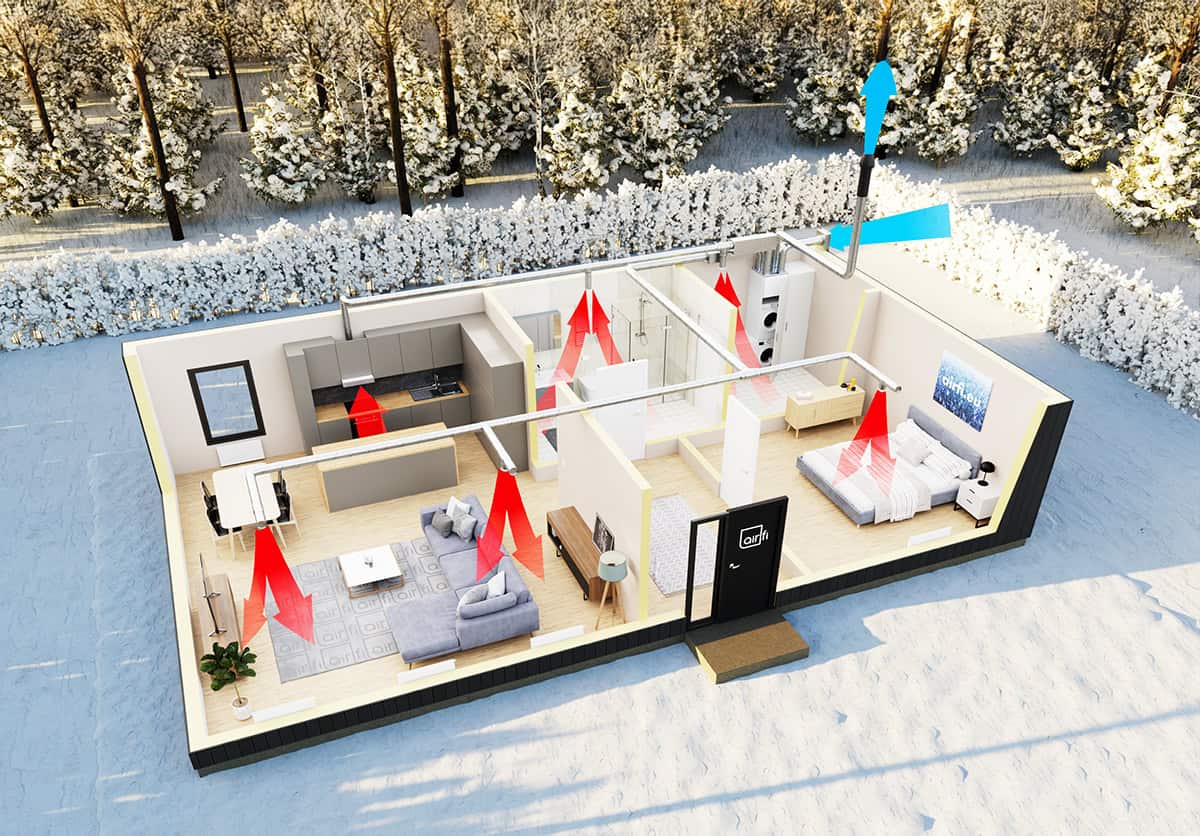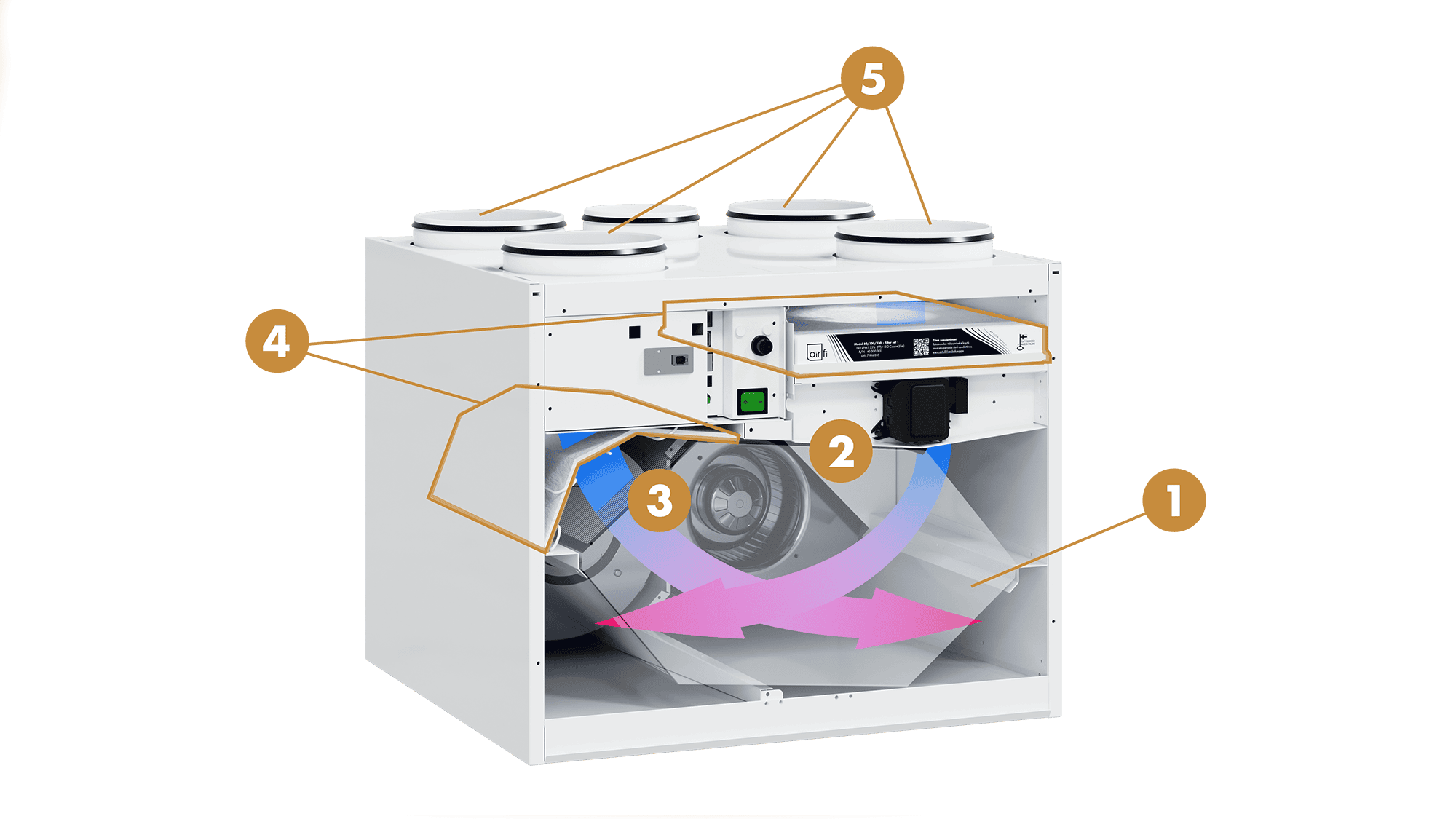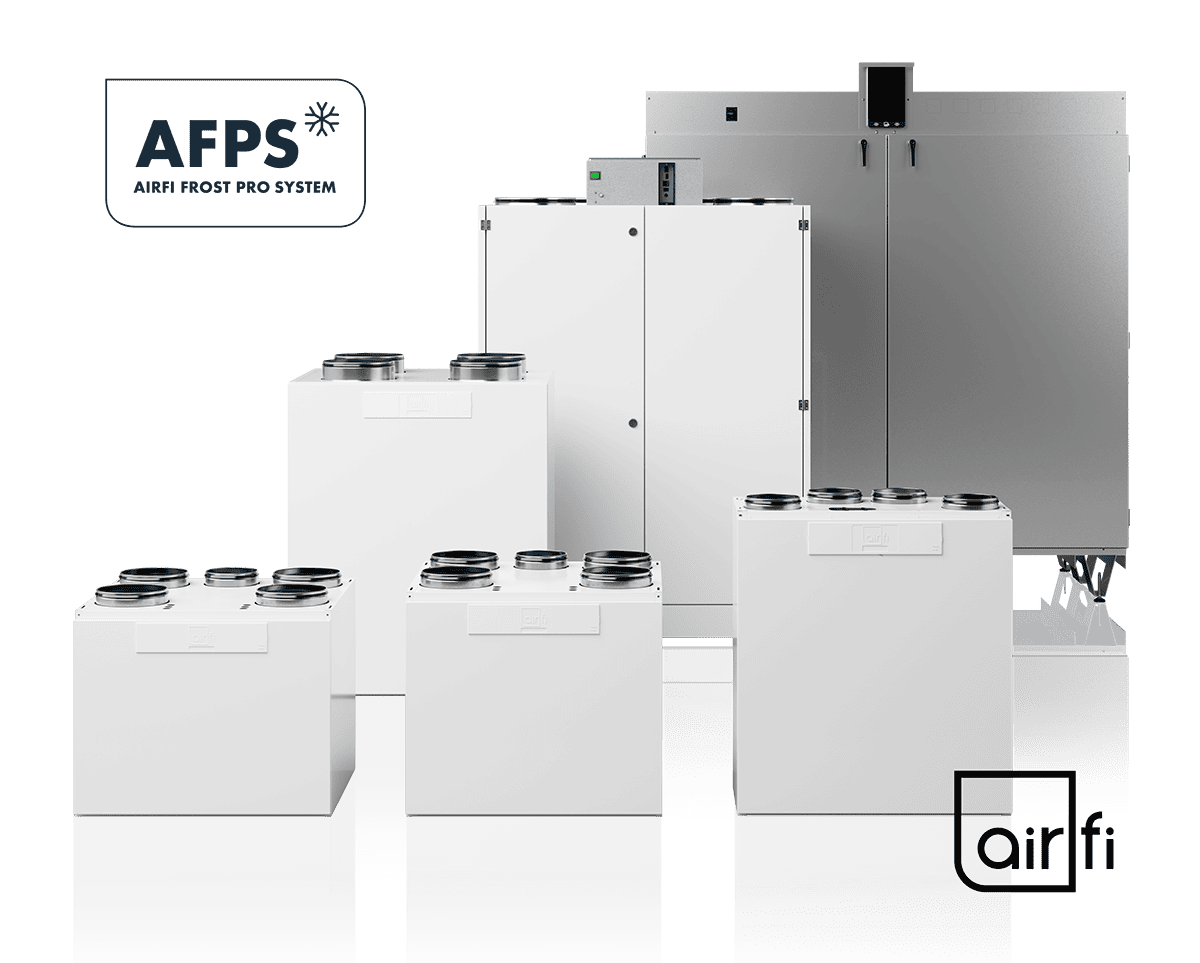Mechanical Ventilation with Heat Recovery (MVHR), also known as heat recovery ventilation (HRV) or Comfort ventilation, is essential innovation in modern building design, ensuring high air quality and energy efficiency. These systems provide a sustainable solution for ventilation, capturing and reusing heat from extracted air to warm incoming fresh air. For professionals in construction, HVAC, and sustainability-focused industries, MVHR systems are a game-changer.
This article explores the benefits, applications, and why MVHR systems are becoming indispensable for modern and sustainable buildings.
MVHR System Diagram
MVHR systems work by extracting air from areas with high humidity or pollutants, such as kitchens, bathrooms, and utility rooms. The extracted air passes through a central heat exchanger, transferring its heat energy to the incoming air. Fresh, filtered, and pre-warmed air is supplied to living spaces like bedrooms, living rooms, and studies.
On colder days, the heat exchanger within the MVHR unit transfers heat from the extracted air to the incoming air, ensuring warmth with minimal energy use. During warmer periods, the process can work in reverse, transferring coolth from the cooler indoor air to the warmer incoming air, offering a small cooling effect.
This system maintains a comfortable indoor environment while reducing the need for traditional heating or cooling.
To understand how MVHR systems work, it’s essential to visualize the components and airflow:

Key Components of a MVHR System
1. Heat Exchanger Transfers heat from outgoing air to incoming air without mixing the two streams.
2. Supply Fan Brings fresh air into the system.
3. Extract Fan Removes stale air from the property.
4. Filters Capture pollutants and particulates for cleaner air.
5. Ductwork Connects the system to various rooms in the building.

Benefits of MVHR Systems
Energy Efficiency
MVHR systems recover up to 90% of the heat from outgoing air, which significantly reduces energy bills and lowers overall energy consumption. By decreasing reliance on traditional heating systems, these units are ideal for achieving low carbon footprints in both residential and commercial properties.
Improved Indoor Air Quality (IAQ)
Designed to filter incoming air, MVHR systems effectively remove pollutants, allergens, and contaminants. They maintain a continuous flow of fresh air, which reduces humidity levels and prevents mold growth, ensuring a healthier indoor environment.
Regulatory Compliance
MVHR systems meet or exceed Building Regulations requirements for energy performance and ventilation, including Part F and Part L in the UK. They are essential for meeting Future Homes Standard (FHS), Passive House standards and for achieving BREEAM and LEED certifications, making them a reliable choice for sustainable building projects.
Noise Reduction
By eliminating the need to open windows for ventilation, MVHR systems help maintain quieter indoor environments. This feature is particularly valuable in offices, schools, and healthcare facilities, where noise reduction contributes to productivity and well-being.
Health and Comfort
MVHR systems provide a consistent indoor temperature, improving overall occupant comfort. Additionally, they reduce the risk of respiratory illnesses often linked to poor ventilation, ensuring healthier and more comfortable living and working spaces.
Applications of MVHR Systems

Residential Buildings
- Essential for new builds, particularly those with airtight construction to meet Net Zero.
- Retrofitting options for older homes seeking energy efficiency improvements.

Commercial Properties
- Ideal for office buildings, reducing operational costs while ensuring employee comfort.
- Key to meeting Corporate Social Responsibility (CSR) goals.

Educational and Healthcare Facilities
- Ensures clean air in schools, hospitals, and care homes, where air quality directly impacts health and performance.
- Tailored systems can accommodate specific needs, such as odour control or sterile environments.

Industrial Spaces
- Supports compliance with health and safety standards, while reducing energy consumption in warehouses and factories.
Why Professionals Choose Airfi MVHR Systems
At Airfi, we design and manufacture MVHR systems tailored to professional needs and for projects of all sizes, offering advanced technology and unmatched energy efficiency. Our product development covers everything related to ventilation products, from software design to machine structure and further development. Here’s what sets us apart:
Market-Leading Efficiency
- Our MVHR systems achieve industry-best heat recovery rates by using only post-heater when necessary.
- Designed to meet the diverse and changing conditions of northern climates, our systems perform equally well in cold, warm, and humid environments.
Advanced Technology
- Airfi MVHR systems utilise Artificial Intelligence (AI) to optimise their operation. This way the units only operate when needed, achieving remarkable savings in energy costs.
Custom Solutions
- We work closely with architects, builders, and facility managers to design systems that integrate seamlessly into any project.
Easy Installation, Use and Maintenance
- Compact and easy to install.
- Intuitive control systems and easy access filters.
- Long-lasting components reduce maintenance time and costs.
Sustainability Commitment
- All systems are designed to last with environmentally friendly materials, and they support green building initiatives.
- All our units are rated at least A for energy performance, meeting the UK’s minimum standard for heat recovery systems introduced in 2018.
MVHR System Cost
The initial installation costs of MVHR systems depend on the size and complexity of the system, as well as the specific requirements of the building. Operational costs are minimal, with regular maintenance limited to filter replacements, which are affordable and easy to manage. These costs are offset by the significant energy savings achieved through heat recovery, which can reduce heating bills noticeably each year (15-25%). Over time, these savings, combined with compliance with green building standards, make MVHR systems a smart and sustainable long-term investment.
MVHR Systems and the Future of Sustainable Buildings
As the UK moves toward stricter sustainability targets, MVHR systems are key to achieving energy-efficient buildings. They reduce carbon emissions, improve comfort, and create healthier environments.
By recovering heat from outgoing air and using it to warm incoming fresh air, MVHR systems significantly lower energy consumption and heating requirements, contributing to more sustainable energy use.
Crucial for net-zero energy buildings and meeting Future Homes Standard, MVHR minimizes energy loss while ensuring efficient ventilation and maintaining occupant comfort.
MVHR systems offer environmental benefits, including reduced energy demand, lower heating costs, and improved indoor air quality. They help regulate temperature, enhance comfort, and provide sound insulation by eliminating the need for open windows.
Overall, MVHR systems combine energy savings, health benefits, and comfort, making them essential for the future of sustainable building design.
By recovering heat from outgoing air and using it to warm incoming fresh air, MVHR systems significantly lower energy consumption and heating requirements, contributing to more sustainable energy use.
Conclusion
MVHR systems are no longer a luxury; they are a necessity for modern building projects. Their ability to combine energy efficiency, superior air quality, and regulatory compliance makes them a valuable asset for professionals in the construction and HVAC industries.
At Airfi, we are committed to providing top-tier MVHR systems suitable for all needs. Whether you’re building new, retrofitting, or improving an existing system, our solutions ensure optimal performance and long-term sustainability.
Contact us today to learn how Airfi can help you revolutionize your building’s ventilation system.
